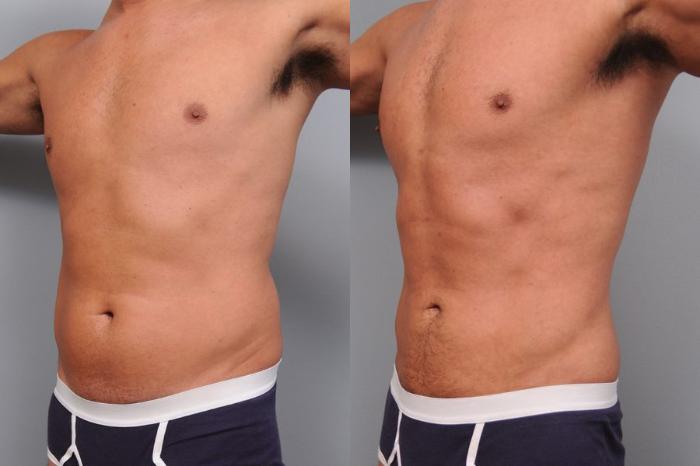Liposuction Options and Costs: What You Need to Know

People opt for liposuction for various reasons, including eliminating stubborn fat pockets that resist diet and exercise. The procedure offers both health and aesthetic benefits, such as improved body shape, boosted self-confidence, and, sometimes, reduced risk of obesity-related conditions.
Liposuction Turkey offers multiple techniques to address stubborn fat deposits, each with advantages and costs. By understanding the various options and factors that influence pricing, you can make an informed decision that aligns with your aesthetic goals and budget.
Types of Liposuction
Traditional Liposuction
Traditional liposuction, also known as suction-assisted liposuction (SAL), is the most conventional form of this procedure. It involves inserting a small, hollow tube (cannula) through small incisions in the skin. The surgeon then manually moves the cannula back and forth to break up the fat cells, which are suctioned out using a surgical vacuum or syringe attached to the cannula.
Pros:
- Effective for large areas of fat removal
- Long track record of successful results
Cons:
- More invasive compared to newer techniques
- Longer recovery time
- Higher risk of complications such as bleeding and infection
Tumescent Liposuction
Tumescent liposuction is a refinement of the traditional method. It involves injecting a large volume of a dilute solution of local anesthetic (lidocaine), epinephrine, and saline into the fatty tissue. The solution causes the targeted area to become swollen and firm (tumescent), making it easier to remove fat with less blood loss and pain.
Pros:
- Reduced bleeding and bruising
- Enhanced safety and comfort
- Faster recovery compared to traditional liposuction
Cons:
- Longer procedure time due to the preparation phase
- Potential for lidocaine toxicity if not properly administered
Ultrasound-Assisted Liposuction (UAL)
UAL uses ultrasonic energy to liquefy fat cells before they are removed. This technique can be performed externally or internally. In external UAL, the ultrasound device is applied over the skin, while in internal UAL, the cannula emits ultrasonic energy.
Benefits:
- Particularly effective for fibrous areas like the upper back or male chest
- This can result in smoother contours and skin tightening
Risks:
- Higher risk of burns and thermal injury
- Longer operation time
- Requires specialized training and equipment
Laser-Assisted Liposuction (SmartLipo)
SmartLipo employs laser energy to target fat cells. The laser is introduced via a small fiber threaded through a cannula. The laser energy liquefies the fat cells, which are either suctioned out or naturally absorbed by the body. The heat from the laser also stimulates collagen production, which can lead to skin tightening.
Pros:
- Minimal invasiveness
- Reduced bleeding and swelling
- Skin tightening benefits
Cons:
- More expensive than traditional liposuction
- Risk of burns and thermal damage
- It may require multiple sessions for optimal results
Power-Assisted Liposuction (PAL)
PAL involves using a mechanically powered cannula that rapidly vibrates, facilitating the breakup of fat cells for easier removal. The vibration reduces the surgeon’s physical effort, potentially increasing precision and reducing procedure time.
Pros:
- The less manual effort leading to more precise fat removal
- Shorter procedure time
- Reduced trauma to surrounding tissues
Cons:
- It may be less effective for large volumes of fat
- Requires specialized equipment
Vaser Liposuction
Vaser liposuction utilizes ultrasound technology to emulsify fat cells, making suctioning them easier. This technique selectively targets fat cells while preserving surrounding tissues such as nerves, blood vessels, and connective tissue.
Pros:
- High-definition body contouring capability
- Less pain and bruising
- Enhanced skin retraction
Cons:
- More costly than traditional methods
- Requires a skilled and experienced surgeon
- Longer learning curve for the technique
Water-Assisted Liposuction (Body-Jet)
Water-assisted liposuction uses a pressurized stream of saline solution to dislodge fat cells, which are suctioned out. This gentle method minimizes damage to surrounding tissues and preserves the integrity of fat cells, which can be useful for fat grafting procedures.
Benefits:
- Gentler on the body, leading to faster recovery
- Less bruising and swelling
- Suitable for fat transfer procedures
Risks:
- Generally less effective for large volumes of fat
- It may require a longer procedure time
CoolSculpting (Cryolipolysis)
CoolSculpting is a non-invasive alternative to liposuction that uses controlled cooling to freeze and destroy fat cells. Over time, the body naturally processes and eliminates dead fat cells, gradually reducing fat in the treated area.
Pros:
- Non-surgical and non-invasive
- No downtime required
- Gradual and natural-looking results
Cons:
- Results may take several months to become apparent
- Generally, less dramatic results compared to surgical liposuction
- May require multiple treatments for desired outcomes
Each type of liposuction offers unique advantages and potential drawbacks. When considering liposuction, discussing these options with a qualified surgeon is crucial to determine the best approach based on your goals, body type, and health considerations.
Factors Affecting Liposuction Costs
Type of Procedure
The cost of liposuction varies significantly depending on the type of procedure you choose. Traditional liposuction is less expensive because it doesn’t require specialized equipment or advanced technology. However, newer techniques such as laser-assisted (SmartLipo), ultrasound-assisted (UAL), and Vaser liposuction often incur higher costs due to the sophisticated technology and expertise involved.
Cost Comparison:
- Traditional Liposuction: $3,000 – $5,000
- Tumescent Liposuction: $3,500 – $6,000
- Ultrasound-Assisted Liposuction (UAL): $4,000 – $7,000
- Laser-Assisted Liposuction (SmartLipo): $5,000 – $8,000
- Power-Assisted Liposuction (PAL): $4,000 – $7,000
- Vaser Liposuction: $6,000 – $10,000
- Water-Assisted Liposuction (Body-Jet): $4,000 – $7,000
- CoolSculpting (Cryolipolysis): $2,000 – $4,000 per session
Geographic Location
The geographic location of the clinic or hospital where you undergo liposuction can significantly influence the cost. Clinics in metropolitan areas or regions with a high cost of living generally charge more than those in rural areas. For instance, liposuction in New York City or Los Angeles will likely be more expensive than in smaller towns.
Cost Variations by Region:
- Urban Areas: $5,000 – $10,000
- Suburban Areas: $4,000 – $8,000
- Rural Areas: $3,000 – $6,000
Surgeon’s Expertise
A surgeon’s experience and reputation are crucial in the cost of liposuction. Surgeons who are board-certified and have extensive experience typically charge higher fees. Their expertise can also reduce the risk of complications, potentially making the higher cost worthwhile.
Impact on Pricing:
- Highly Experienced Surgeons: $6,000 – $10,000
- Moderately Experienced Surgeons: $4,000 – $7,000
- Less Experienced Surgeons: $3,000 – $5,000
Facility Fees
The costs associated with the facility where the procedure is performed can add significantly to the total expense. Accredited surgical centers or hospitals with advanced amenities might charge more than smaller clinics or office-based surgical suites.
Breakdown of Facility Fees:
- Operating Room Charges: $1,000 – $3,000
- Equipment Fees: $500 – $2,000
- Accredited Facilities: $2,000 – $5,000
Anesthesia Fees
Anesthesia costs can vary depending on the type used during the procedure. Local anesthesia is less expensive than general anesthesia, which requires an anesthesiologist to be present throughout the procedure.
Cost Implications:
- Local Anesthesia: $500 – $1,500
- General Anesthesia: $1,000 – $3,000
- Sedation Anesthesia: $800 – $2,000
Comprehensive care before and after the procedure can add to the overall cost. Preoperative consultations, medical tests, and postoperative follow-ups are essential for successful outcomes and smooth recovery.
Ready to learn more about liposuction and ensure the best care for your procedure? Visit Flymedi to explore expert advice, find top-rated surgeons, and book your consultation today. Start your journey to a beautiful, confident you with Flymedi.





